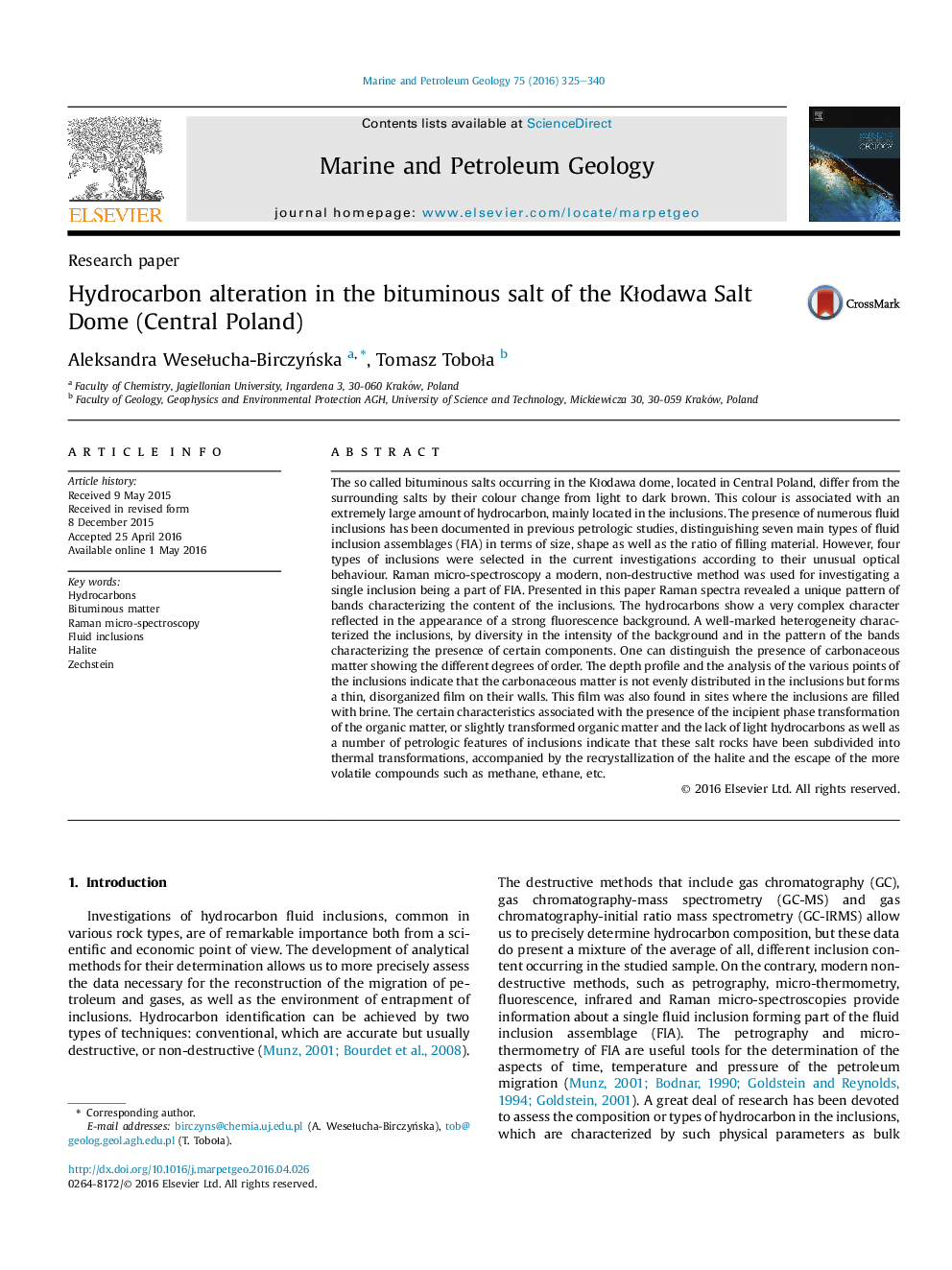| کد مقاله | کد نشریه | سال انتشار | مقاله انگلیسی | نسخه تمام متن |
|---|---|---|---|---|
| 6434364 | 1637152 | 2016 | 16 صفحه PDF | دانلود رایگان |

- Halite recrystallization results in the most volatile constituents escaping.
- Hydrocarbons coexist with organic transient phases of different degrees of organization within inclusions.
- Organic matter condensation proceeds within encased inclusions.
- A transient phase thin coating on the inclusion edge is in charge of the optical effects.
- Entrapped hydrocarbons express a slight thermal transformation process.
The so called bituminous salts occurring in the KÅodawa dome, located in Central Poland, differ from the surrounding salts by their colour change from light to dark brown. This colour is associated with an extremely large amount of hydrocarbon, mainly located in the inclusions. The presence of numerous fluid inclusions has been documented in previous petrologic studies, distinguishing seven main types of fluid inclusion assemblages (FIA) in terms of size, shape as well as the ratio of filling material. However, four types of inclusions were selected in the current investigations according to their unusual optical behaviour. Raman micro-spectroscopy a modern, non-destructive method was used for investigating a single inclusion being a part of FIA. Presented in this paper Raman spectra revealed a unique pattern of bands characterizing the content of the inclusions. The hydrocarbons show a very complex character reflected in the appearance of a strong fluorescence background. A well-marked heterogeneity characterized the inclusions, by diversity in the intensity of the background and in the pattern of the bands characterizing the presence of certain components. One can distinguish the presence of carbonaceous matter showing the different degrees of order. The depth profile and the analysis of the various points of the inclusions indicate that the carbonaceous matter is not evenly distributed in the inclusions but forms a thin, disorganized film on their walls. This film was also found in sites where the inclusions are filled with brine. The certain characteristics associated with the presence of the incipient phase transformation of the organic matter, or slightly transformed organic matter and the lack of light hydrocarbons as well as a number of petrologic features of inclusions indicate that these salt rocks have been subdivided into thermal transformations, accompanied by the recrystallization of the halite and the escape of the more volatile compounds such as methane, ethane, etc.
443
Journal: Marine and Petroleum Geology - Volume 75, August 2016, Pages 325-340